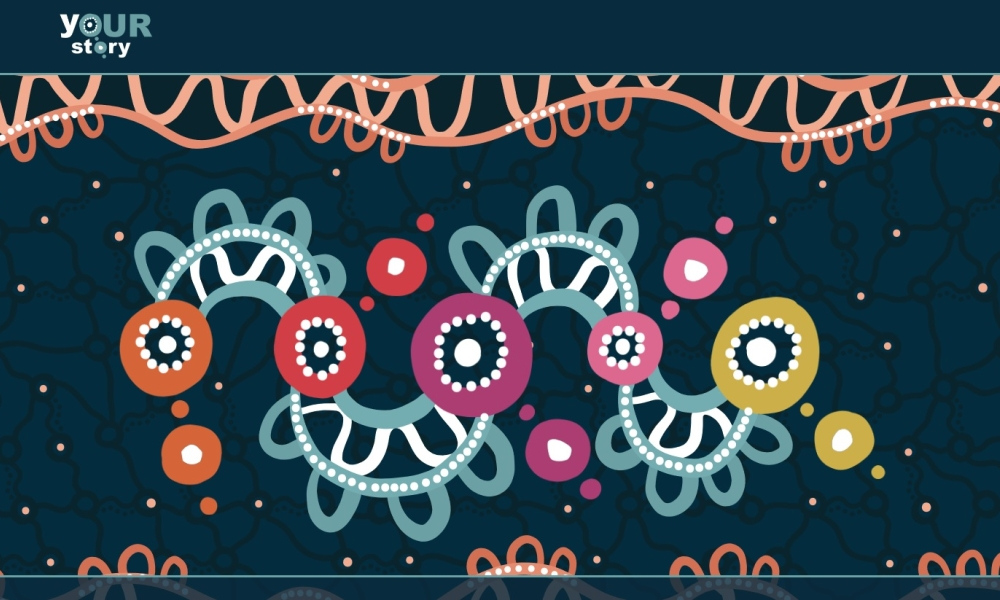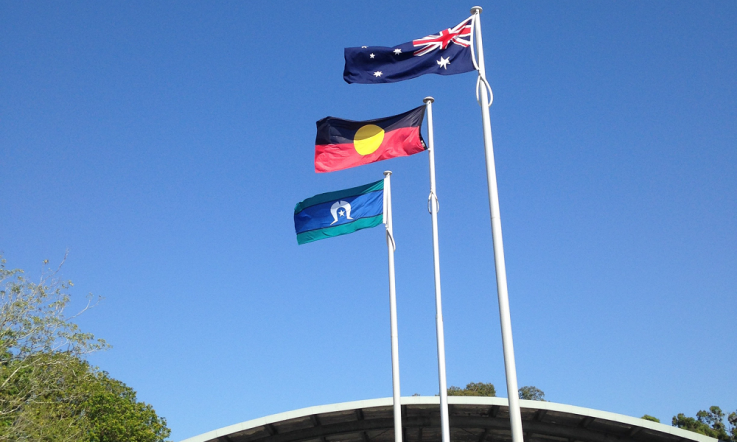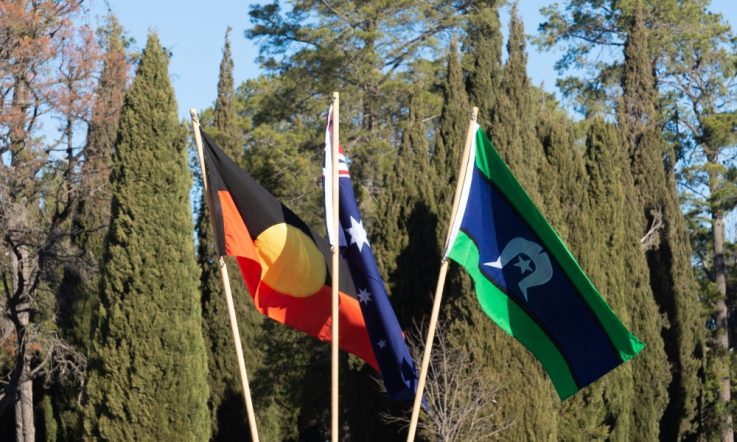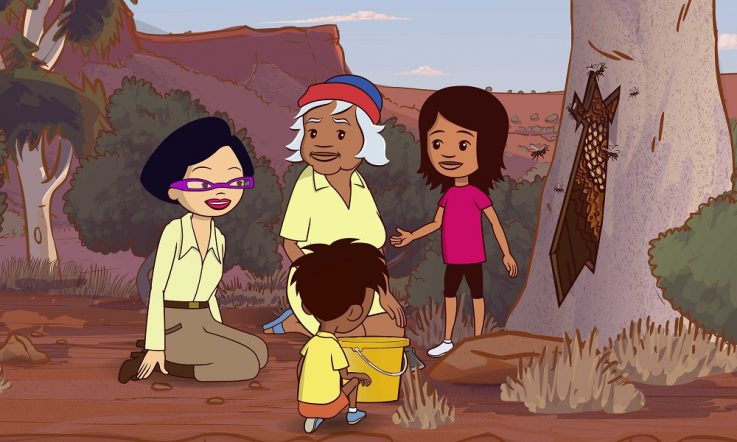The yourstoryourjourney website has been created to help teachers and school leaders form relationships and partnerships with communities and parents to achieve better educational outcomes for all Aboriginal and Torres Strait Islander students. In this article, the team who developed yourstoryourjourney discuss the professional learning resource and materials, the principles behind them, and starting questions for you and your colleagues to consider.
We acknowledge upfront that many people do not know as much about Aboriginal and Torres Strait Islander cultures and the best ways to support Aboriginal and Torres Strait Islander students as they would like to, and that is OK. That is why the www.yourstoryourjourney.net professional development resource has been developed! What is not OK, is remaining in a state of ignorance because of fear or shame or denial.
The www.yourstoryourjourney.net professional learning resource was developed to support all those working to improve the educational success of Aboriginal and Torres Strait Islander students in early learning centres, schools and higher education institutions. It is intended to be used in teacher education programs (pre-service and in-service), by educators, teachers and school leaders, and by Aboriginal and Torres Strait Islander communities. The resource has been created to help educators to form relationships and partnerships with communities and parents to achieve better educational outcomes for all Aboriginal and Torres Strait Islander students. It has been particularly designed to enable and position educators as powerful agents of change.
Australian Professional Standards for Teachers
The Australian Professional Standards for Teachers requires that all teachers and school leaders must meet standards, according to the four stages of career progression (Graduate, Proficient, Highly Accomplished, and Lead). There is a professional responsibility for all teachers and leaders to learn about Aboriginal and Torres Strait Island cultures and the best ways to teach Aboriginal and Torres Strait Islander students. Here are the relevant focus areas:
- Focus 1.4 Strategies for teaching Aboriginal and Torres Strait Islander students
- Focus 2.4 Understand and respect Aboriginal and Torres Strait Islander people to promote reconciliation between Indigenous and non-Indigenous Australians
- Focus 7.3 Engage with the parents/carers
yourstoryourjourney is designed to be supportive and helpful. The materials have been created by and with Aboriginal and Torres Strait Islander educators, scholars and researchers. Once you have found out more about what you know and don't know, you are provided with examples of resources and strategies to trial and learn about. Of course, there will always be some trial and error as you learn, practice, reflect and learn again. This can be challenging work. You are encouraged at every step to do deep learning.
What are the learning principles?
The resources have been designed with five learning principles that guide your professional learning journey: Relationality, Togetherness, Critical discernment, Pro-activity and Community.
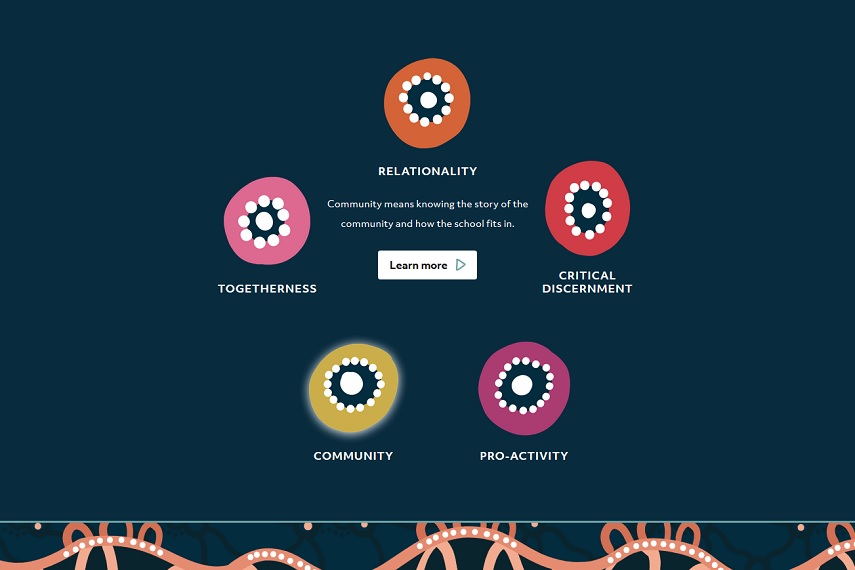
Here is a brief definition of each term, provided in the context of this resource:
- Relationality in education means working through relationships.
- Togetherness means working together as a team.
- Pro-activity means actively seeking connections with an open and engaged mindset.
- Community means knowing the story of the community and how the school connect together.
- Critical discernment means making deliberate and informed choices about using your resources and teaching strategies.
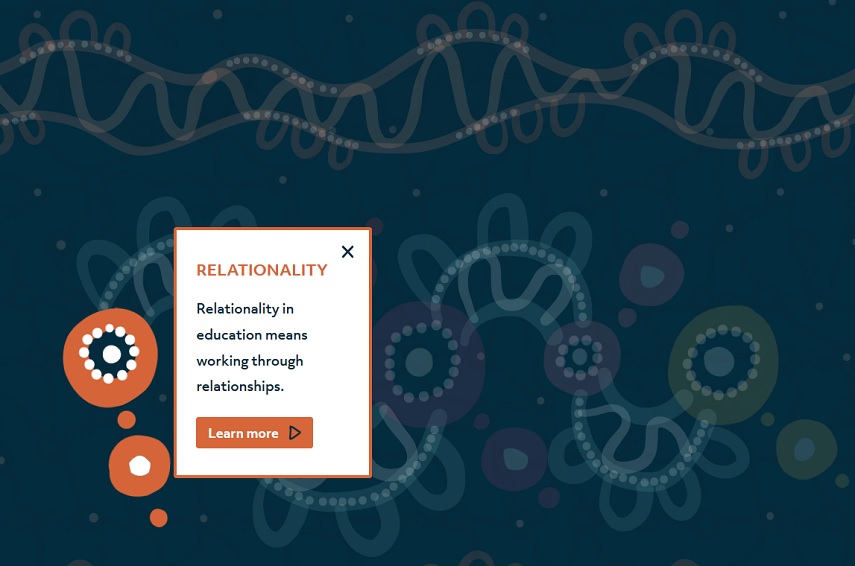
Statements of Intent
For each principle, there are a set of Statements of Intent. These provide ideas for you and your colleagues to think about, and highlight the important knowledges, skills and attitudes that embody and enact the principle. The resource also enables reflection over time. For example, here are the Statements of Intent for the principle of Relationality (and some questions to practice and gauge your own understanding):
- I can acknowledge the Country we are on, and respect ‘on Country' stories. (How can our school acknowledge the Country we are on, and respect ‘on Country' stories?)
- Our school is informed by and draws on local Aboriginal and Torres Strait Islander people to compose and deliver Acknowledgement of Country and Welcome to Country. (What are our school's protocols around Acknowledgement of Country and Welcome to Country?)
- I learn about local Aboriginal and Torres Strait Islander people from the people themselves, and respect their ways of identifying themselves and relating to others. (How do local Aboriginal and Torres Strait Islander people identify themselves and relate to others, and how does the school respect this?)
- I contribute to our school being a culturally safe place for Aboriginal and Torres Strait Islander people. (How do we make our school a culturally safe place for Aboriginal and Torres Strait Islander people?)
- I consult Aboriginal and Torres Strait Islander people in relation to appropriate curriculum and ensure community members contribute to curriculum in the way they want to. (How can we work together to develop local First Nations curriculum?)
- I advocate for and facilitate the incorporation of Aboriginal and Torres Strait Islander people into governance mechanisms at our school. (How can our school incorporate Aboriginal and Torres Strait Islander people into school governance?)
Embarking on your learning journey through inquiry
Each of the five principles has an interactive page built around the Reflect-Inquire-Reflect cycle. You can start by using the Statements of Intent to take a ‘snapshot' of what you know and do, then reflect on current practice and knowledge (as shown above). By following the inquiry questions, you can explore potential changes to your practice. Each question comes with strategies and resources to support you on your learning journey. For example, here are the inquiry questions, strategies and resource links for the principle of Relationality:
How can our school (or learning environment) acknowledge the Country we are on, and respect ‘on Country' stories?
- The best way to find out about Country and how to respect ‘on Country' stories is to talk to local Aboriginal and Torres Strait Islander parents and community members.
- Engaging with Aboriginal communities: Where do we start? (PDF 560kb) has useful tips and links to help you identify who to contact in your local area.
- Inside and outside knowledge introduces the idea that there are protocols around who owns what knowledge, and who determines how it should be used.
What strategies could your school implement?
What are our school's protocols around Acknowledgement of Country and Welcome to Country?
- Ways for schools to Acknowledge Country and Welcome people to Country need to be determined by consulting local Aboriginal and Torres Strait Islander people. Welcome to Country and Acknowledgement of Country: A guide for Victorian schools (PDF 3.5MB) has information and protocols.
- In some places, the impact of colonisation has caused disagreement about Country and the people who live in the community. Navigating this requires awareness and sensitivity.
What does your school (or place) currently do?
What consultation with local Aboriginal and Torres Strait Islander people is this based on?
In what variety of ways can Country be acknowledged in your school?
You may also be interested in this Welcome to Country app.
How do local Aboriginal and Torres Strait Islander people identify themselves and relate to others, and how does the school respect this?
- Across Australia, there are many ways that Aboriginal and Torres Strait Islander people relate to each other. This may be through kinship, or relationships. For all Aboriginal and Torres Strait Islander people, relationships are important. The best way to find out how local First Nations people relate to others is to talk to local Aboriginal and/or Torres Strait Islander people.
Who could you talk to, to find out more about local ways of relating?
How could your school respect these ways of relating and knowing each other, in governance, curriculum and teaching?
- This online Kinship Module has information about ways that some Aboriginal peoples relate to each other.
How do we make our school a culturally safe place for Aboriginal and Torres Strait Islander people?
- Aboriginal and Torres Strait Islander Children's Cultural Needs (PDF 7.9MB) provides information about the cultural needs of Aboriginal and Torres Strait Islander children and provides a reflective framework for educators to think about how they can work in this space.
What strategies could our school use?
How can we work together to develop local Aboriginal and/or Torres Strait Islander curriculum?
- Aboriginal community engagement in primary schooling provides an example of a school- Aboriginal community unit of learning co-developed by teachers and Aboriginal community members, demonstrating how to embed Aboriginal and Torres Strait Islander perspectives and knowledge.
What would our school need to do to make an activity like this happen?
- Embedding Indigenous knowledges in curriculum provides guidance, information and resource links.
How can our school incorporate Aboriginal and Torres Strait Islander people into school governance?
- The Localities Embracing and Accepting Diversity (LEAD): School-based audit tool (PDF 1.5MB) helps schools audit their current practice and provides strategies for improving practice.
How does our school shape up in the audit?
Who do we need to include in our conversations about this?
What strategies could our school put in place?
Continuing your learning journey
Having learned more and identified ways to improve your practice, the next part of the cycle is to reflect again and think about the next steps. It's important to remember that everyone's journey is their own, everyone's story is unique, and everyone's story can change. We hope that through using the yourstoryourjourney resource and the Reflect-Inquire-Reflect cycle, you and your colleagues can keep learning, change your practice, and work together with Aboriginal and Torres Strait Islander Peoples to improve students' educational outcomes.
One of the co-authors of this article, Alison Quin, runs a popular online short course to help teachers and educators embed Aboriginal and Torres Strait Islander perspectives into their practice. Visit the QUT site for more information and to enrol.
